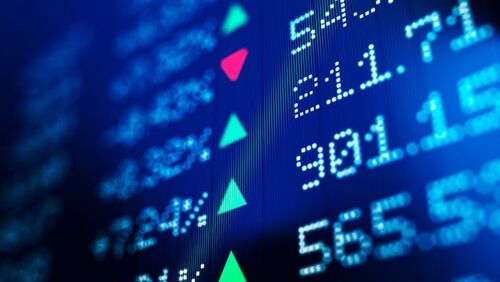Danielle Ecuyer shares where she would invest $10k
Looking back on the past 12 months, I think it is fair to say even the most bullish commentators failed to appreciate the extent of the US bull market.
A pandemic and a contested US presidential election did little to derail investor optimism, including the newfound enthusiasm of the vigilante retail Reddit crowd, who embraced the commission-free trading platform Robinhood. It's a brave new world when retail traders take on hedge funds and manage to topple their short positions.
Underlying the bullish index movements has been a flip-flopping of sentiment between different baskets of stocks such as the value/cyclical and growth/technology. A sub-sector of themes has also come into play, referred to as the stay/work-from-home stocks (Zoom and Netflix), the re-opening stocks (casinos, airlines) and the secular themes such as decarbonisation (lithium, uranium), cloud services/cybersecurity and fintech payment platforms (Square, Affirm and SoFi).
In fact, the rotation and movement between themes and/or baskets has taken place beneath the index levels, meaning the investor experience would vary greatly. Imagine the indexes moved higher (recently led by the technology giants, the FAANGs) but underlying them was a lot of stock price volatility with some very high price rises and falls.
Many of the changes in investor sentiment were driven by the changes in the US 10-year treasury yield, which started at 0.677% at the end of September 2020, peaked at an intraday high of 1.7790% at the end of March 2021 and has since fallen and settled around the 1.3%.
If you are wondering why the 10-year yield is so important, look no further than the narrative behind the movement in this benchmark rate. The higher the 10-year yield went with the re-opening of the US economy and the vaccine rollout, the more value and cyclical stocks performed.
Conversely, investors sold the more expensive growth, technology and the stay-at-home stocks as the 10-year yield rose due to the higher stock valuations and long future earnings lead (meaning they are not currently profitable).
My US stock portfolio has some core exchange traded fund (ETF) holdings, such as Invesco's S&P 500 ETF. I have also held some thematic ETFs such as Global X Lithium & Battery Tech, Invesco Solar and iShares US Healthcare.
In terms of stocks, I have a selection of long-term holdings that I trim if prices run too far or add to when there is a sell- off. Although I have a slant towards growth, innovation and technology (secular trends), I am very aware that the valuations are high by historical measures. Some typical examples are the cloud-based cybersecurity stocks CrowdStrike and Zscaler and the enterprise software companies Atlassian and Snowflake.
My portfolio has been positioned with a barbell approach to capture both growth stocks with reasonable valuations, such as Alphabet and Apple, and cyclical quality stocks such as Honeywell, which has exposure to clean energy and aerospace.
In life sciences, I tripled my money on the biotech Moderna and took profits. Regeneron, another biotech company that produces a monoclonal antibody product used to fight Covid infections, has also been a winning investment.
I took profits after Tesla's stratospheric run to $US855, although the stock remains in the portfolio, as do some long-term holdings in Shopify, Amazon, Microsoft, Apple, Salesforce, Service Now, CrowdStrike, PayPal and Square.
In the cybersecurity theme I added Palo Alto Networks when the stock was sold off in September. Disney remains my re-opening/digital streaming play and I continue to hold some MGM and Alaska Air for the re-opening that comes and goes.
On balance, I try not to trade the stocks, but some of the moves have been so large that not taking profits seemed imprudent.
I will retain and add to quality stocks in predominantly secular growth themes such as decarbonisation, digitalisation, the cloud, cybersecurity, digital wallets and payment systems as well as asset/wealth management.
Where I would invest $10k
Looking ahead, I think the next 12 months will be more challenging, as earnings growth comes off a record high base. There will be question marks around the pandemic's impact on supply chains and input costs.
Inflation expectations could create timeline problems for the US Federal Reserve's plans to taper and eventually raise interest rates.
I would invest in ETFs with secular themes and increase exposure to quality stocks with more defensive earnings streams and dividend income. Some US stockmarket examples:
• Sherwin-Williams is the Dulux of the US and should continue to be a defensive stock.
• Intuit is another long-term winner, a cloud-based software provider for SMEs.
• Blackstone for exposure to the growing demand for private equity globally.
• Linde is an industrial gas company with exposure to the burgeoning green hydrogen market as well as oxygen (a COVID beneficiary).
I believe these companies will offer solid performance with dividend payments, and earnings should not be as exposed if global growth is more challenged and inflation remains elevated for longer than expected.
Get stories like this in our newsletters.



